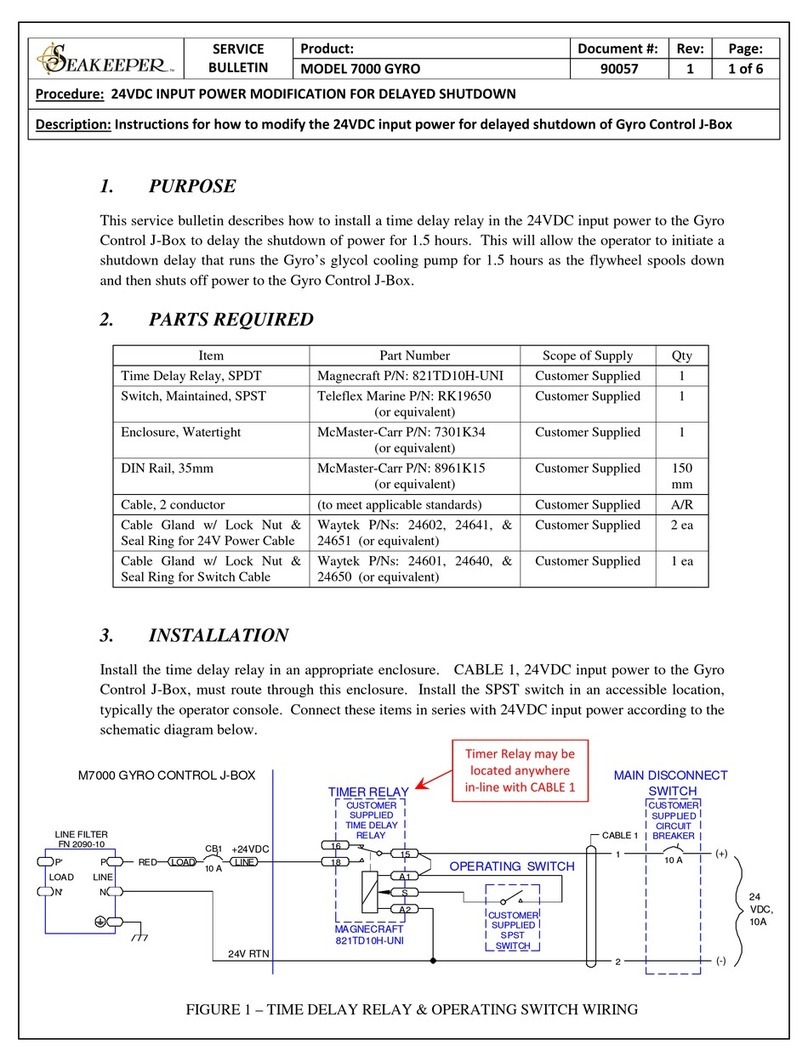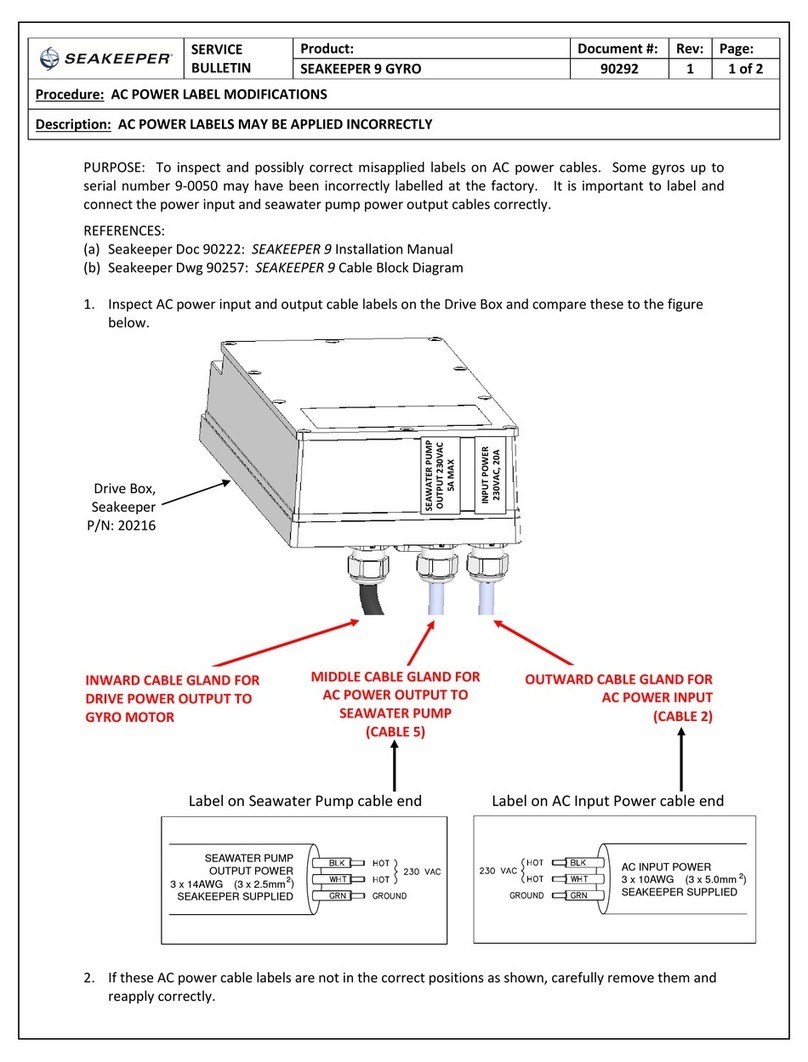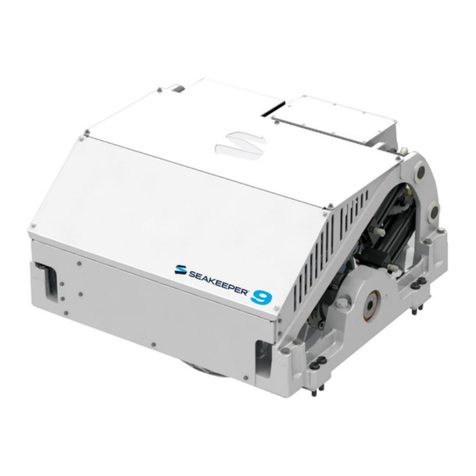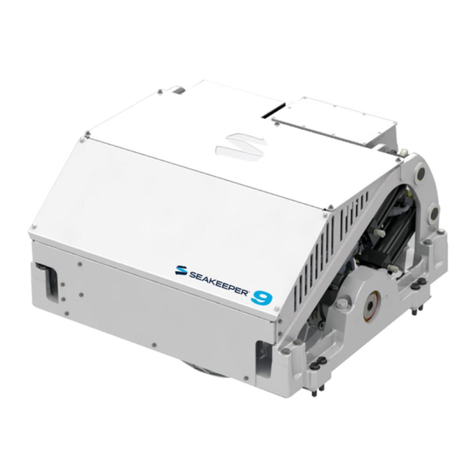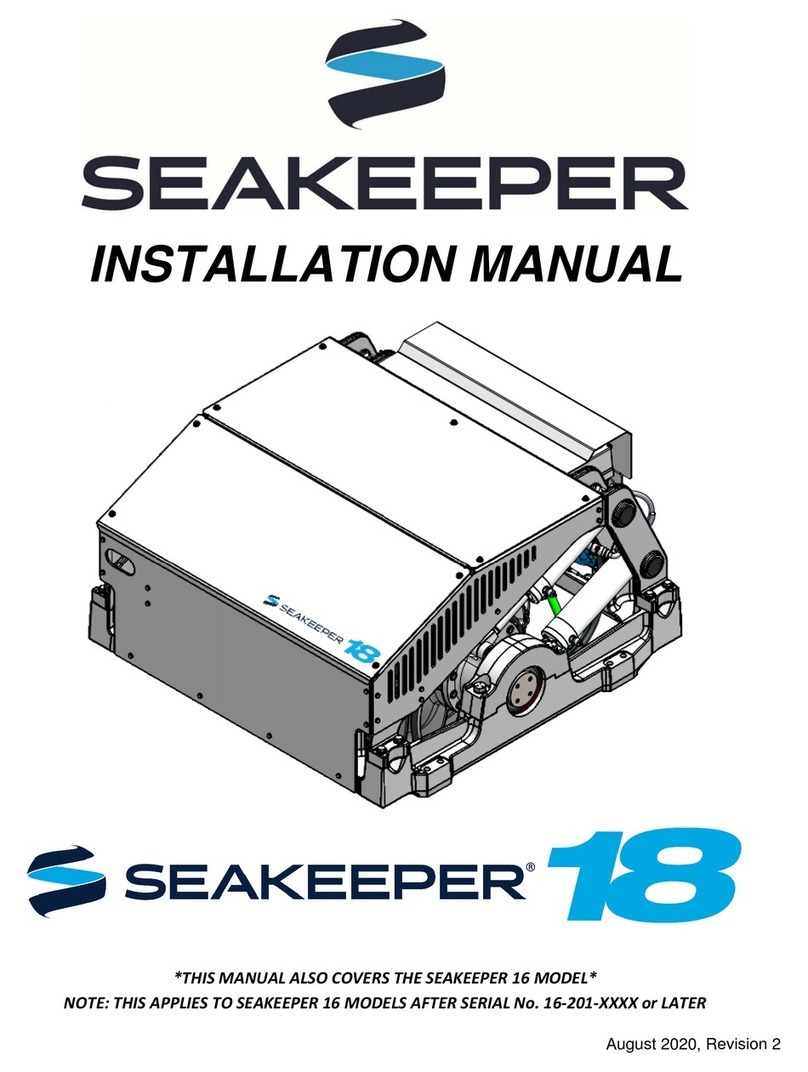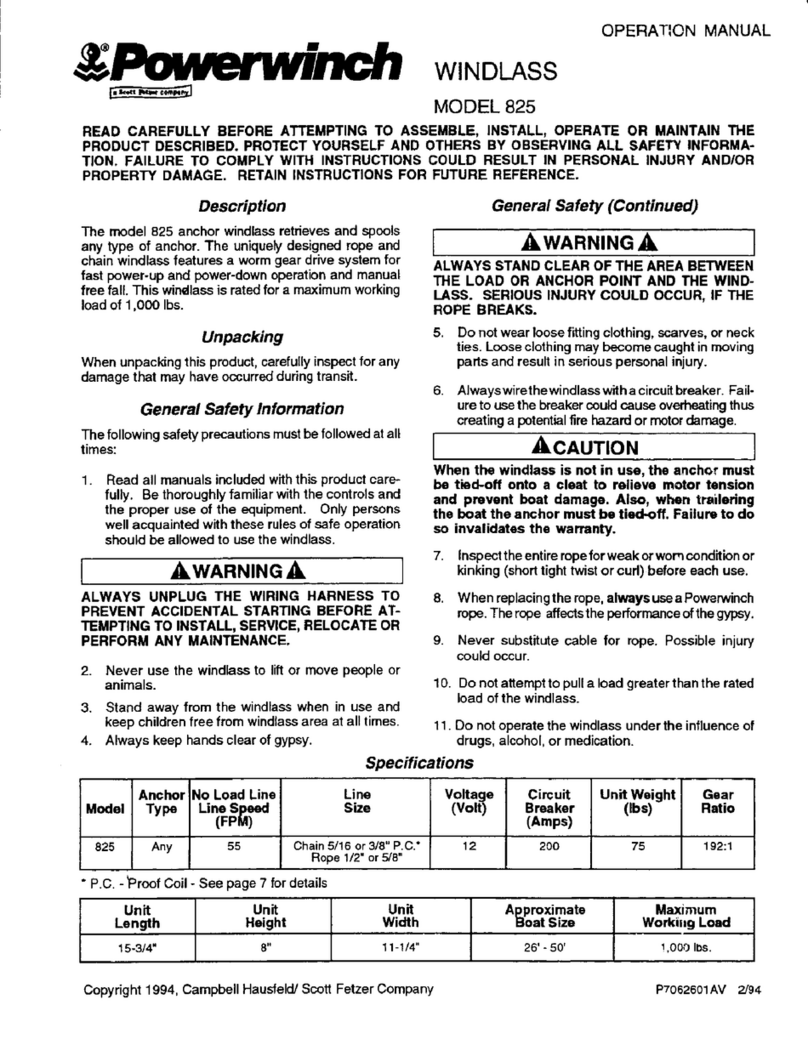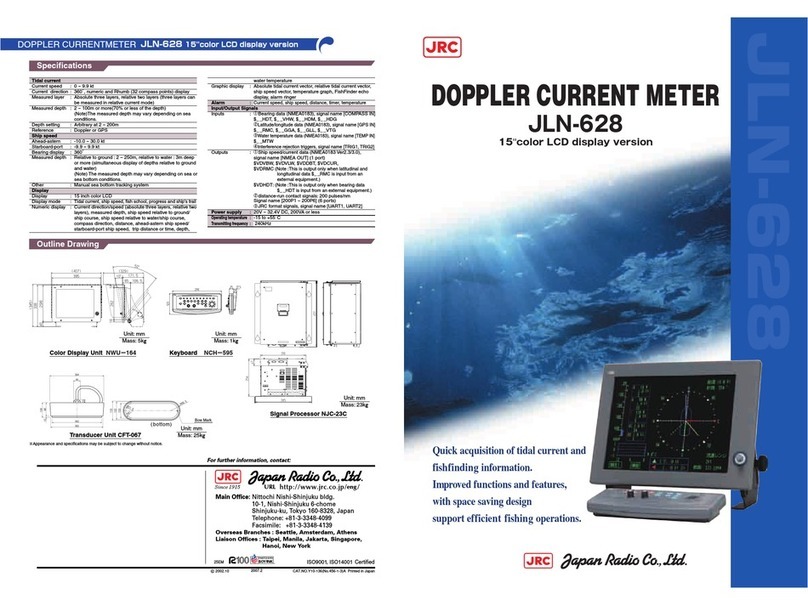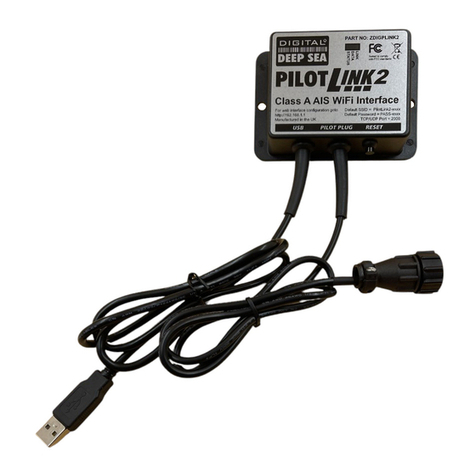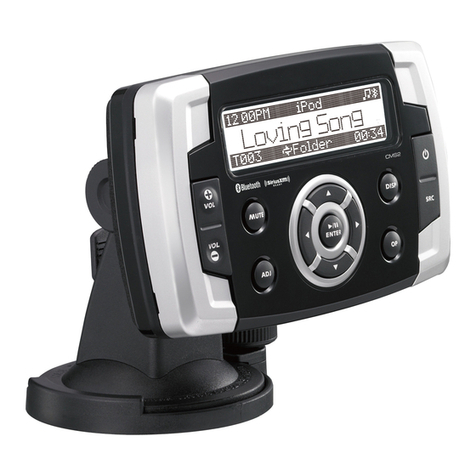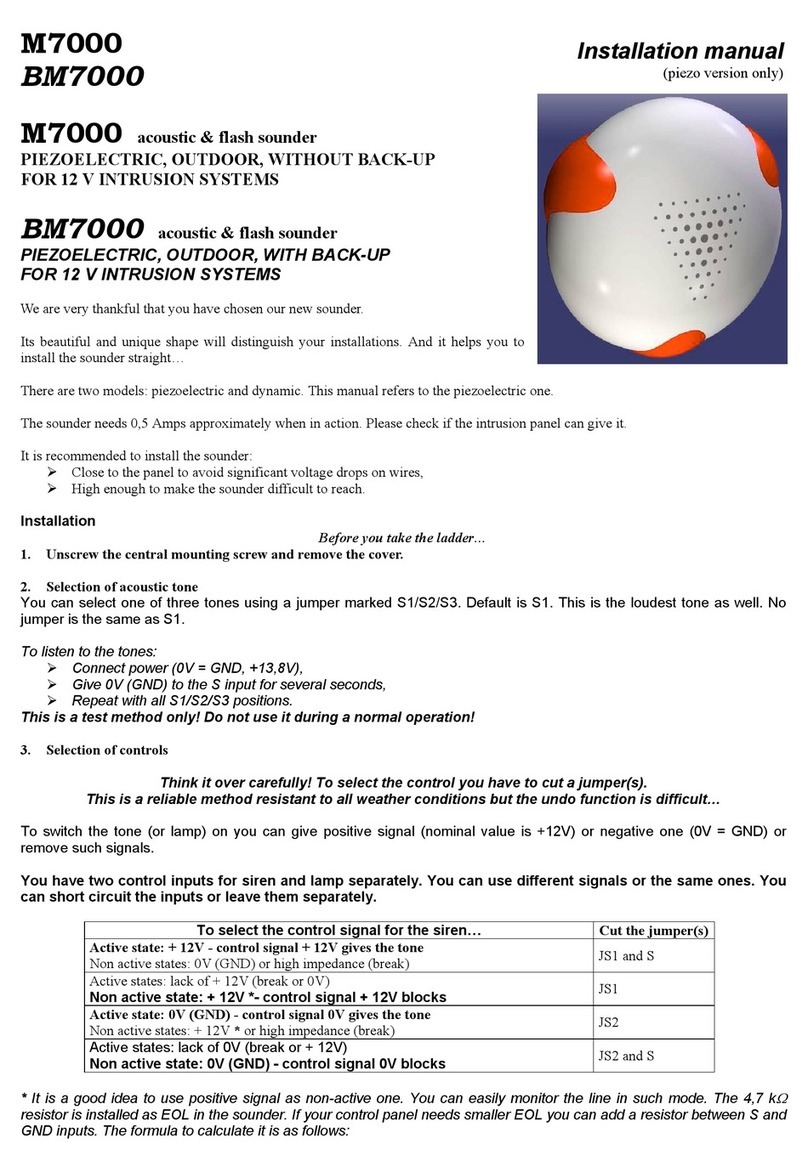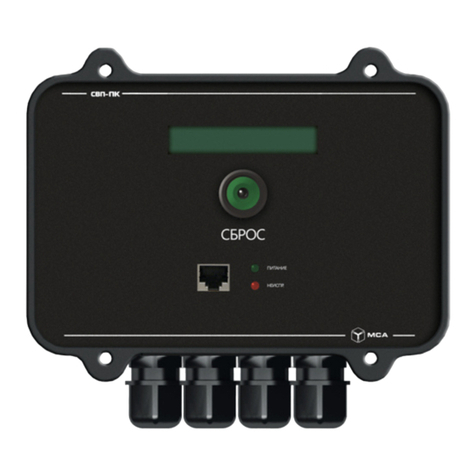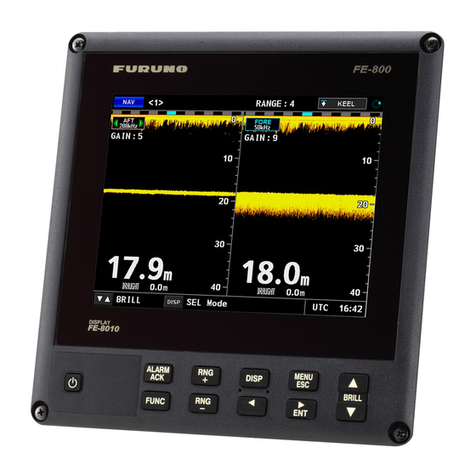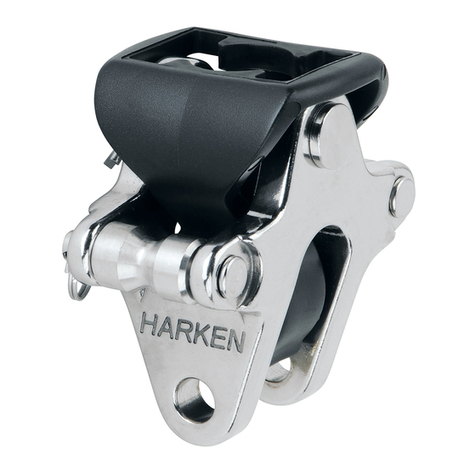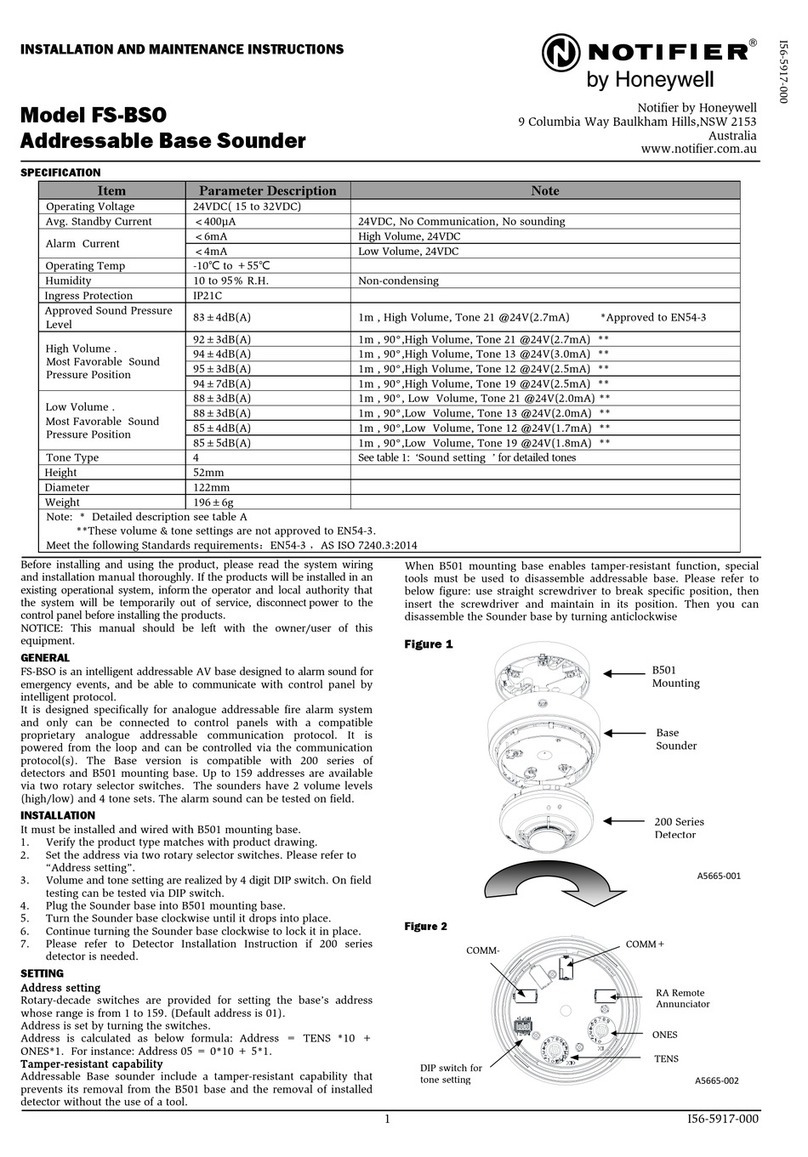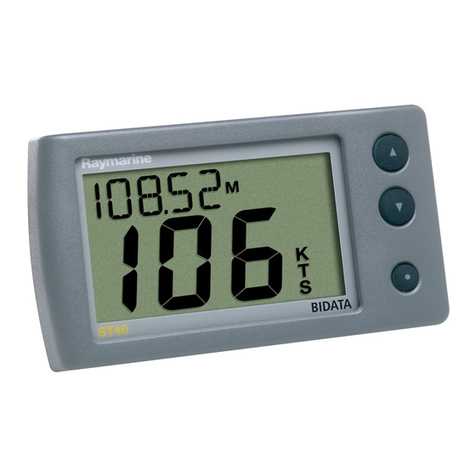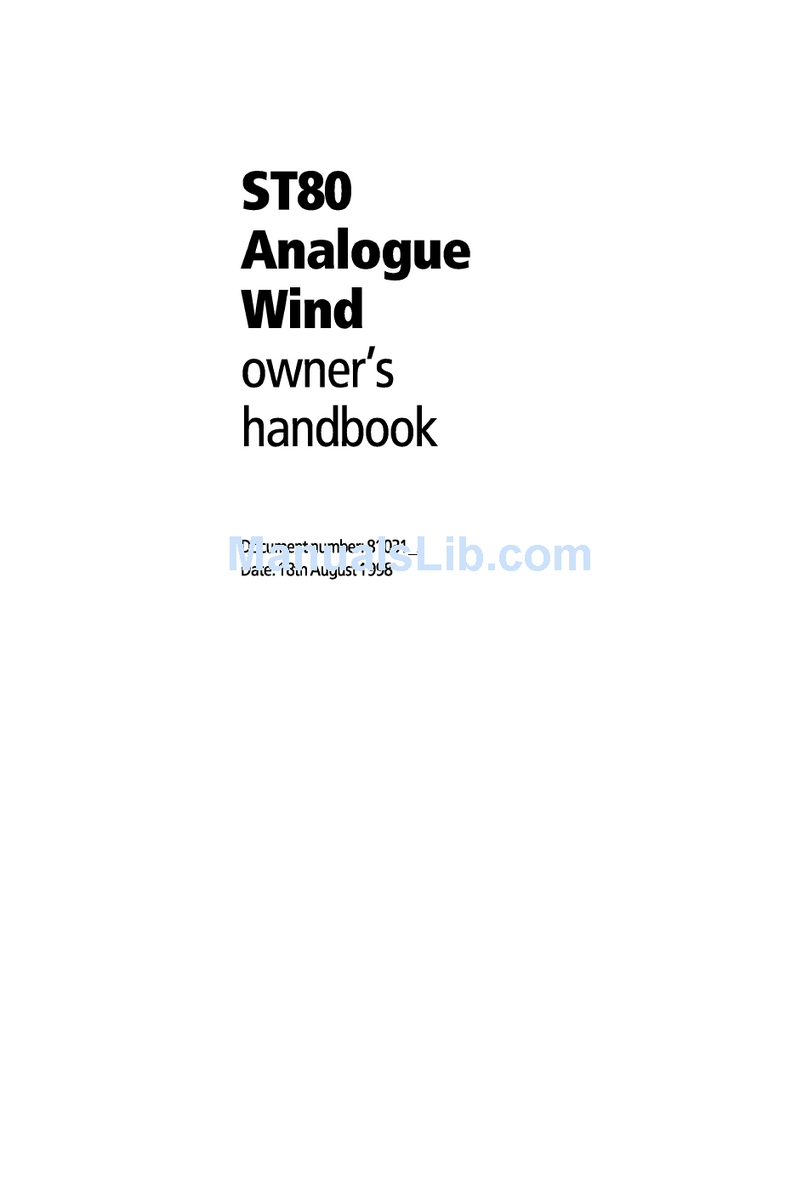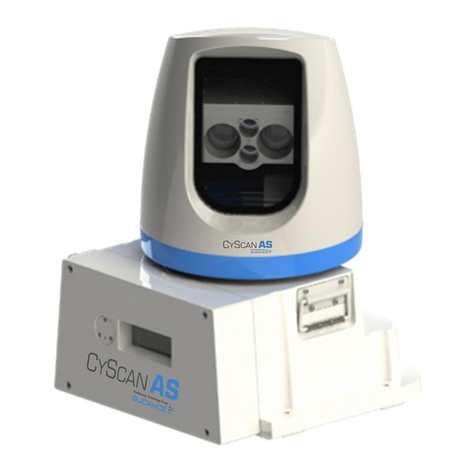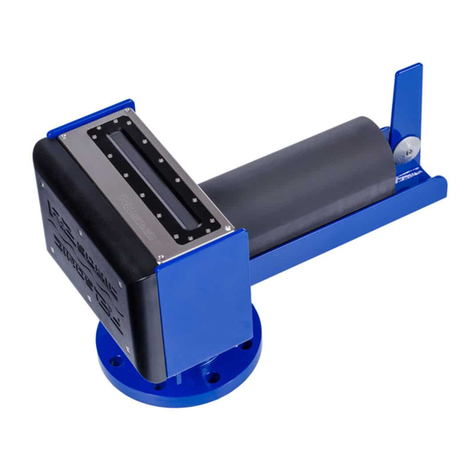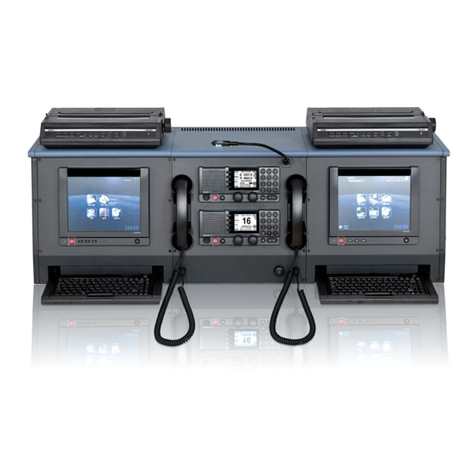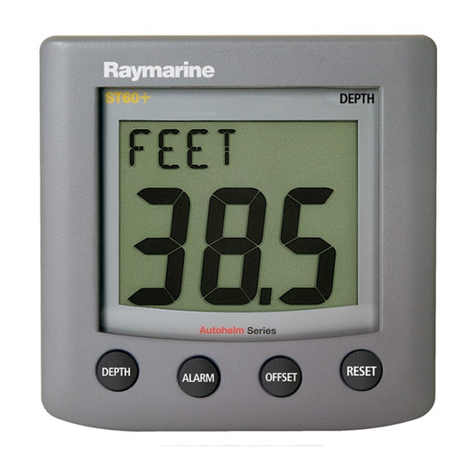Seakeeper 6 User manual

Rev 22 JUNE 2017
INSTALLATION MANUAL

INSTALLATION
MANUAL
Product: Document #: Rev:
SEAKEEPER 6 90402 1
SEAKEEPER 6
INSTALLATION MANUAL
JUNE 2017
Contents:
Section 1 – Mechanical Installation
Section 2 – Electrical Installation
Section 3 – Cooling Installation
Section 4 – Startup
Section 5 – Installation Checklist and Required Supplies
44425 PECAN COURT, SUITE 151
CALIFORNIA, MARYLAND, 20619, U.S.A
PHONE: 410-326-1590
FAX: 410-326-1199
E-MAIL: [email protected]

INSTALLATION
MANUAL
Product: Document #: Rev: Page:
SEAKEEPER 6 90402 1 1 of 6
Section 1: MECHANICAL INSTALLATION
1.0 Introduction
This document is intended to give details and guidance to a boat builder or equipment installer to
install the Seakeeper 6 Stabilization System. The Seakeeper is capable of producing loads up to
17 KN (3820 lbs.) at each of the four mounts and careful consideration should be given to
foundation design to insure it is capable of transferring these loads into the hull.
There are two methods of installing the Seakeeper 6:
1) Bolt-In Installation
2) Saddle Installation
It is assumed that the installer is familiar with bonding using high strength adhesives or
mechanical fasteners to marine structures and has performed structural analysis to assure
the structure to which the Seakeeper mounts can properly transfer the loads the Seakeeper
creates into the hull structure. If the installer has any doubt about the ability of the
structure to transfer the loads to the hull then he should contact a licensed naval architect
or marine engineer to do a structural analysis.
The installer should review the following list of reference drawings to ensure the installation
procedure is fully understood.
Reference Drawings
90389 Seakeeper 6 Hardware Scope of Supply
90392 Seakeeper 6 Installation Template Kit
90398 Seakeeper 6 Installation Details – Bolt in Method
90399 Seakeeper 6 Installation Details – Bond in Method
90397 Seakeeper 6 Cooling Water Schematic
90396 Seakeeper 6 Cable Block Diagram
FIGURE 1 – SEAKEEPER 6

INSTALLATION
MANUAL
Product: Document #: Rev: Page:
SEAKEEPER 6 90402 1 2 of 6
Section 1: MECHANICAL INSTALLATION
1.1 Precautions
Seakeeper must only be lifted from the supplied lifting eyes (See Section 1.4).
Seakeeper flywheel is supported by precision bearings. Make certain while unpacking
and lifting Seakeeper assembly to NOT drop or impart mechanical shock as damage to
bearings could result.
While handling / installing Seakeeper assembly, protect exposed hydraulic brake cylinder
rods (See Figure 1) from scratches or damage as this could lead to premature seal failure
and oil leaks.
While handling / installing Seakeeper assembly, do not allow electrical fittings that exit
bottom of Seakeeper enclosure to come in contact with any surface or object as this could
damage the fittings and potentially affect the vacuum integrity of the enclosure.
Exercise care to protect the painted finish as damage to finish could lead to early
appearance degradation of installed Seakeeper.
1.2 Selection of Installation Location
Selection of mounting location of Seakeeper should consider the following desirable
features:
The Seakeeper must be installed aft of amidships to minimize high
acceleration loadings due to hull/wave impacts during operation at
high speed or in large waves.
Overhead access or sufficient clearance for removal / re-installation of Seakeeper
for overhaul in future years.
Seakeeper should be installed in a dry space to minimize effects of corrosion.
Clearance for replacement of gimbal angle sensor on gimbal shaft (see Figure 2).
Clearance for filling / purging brake hydraulic oil (see Figure 2).
Clearance for filling water/glycol cooling circuit (see Figure 2).
Clearance for replacement of brake hydraulic cylinders (see Figure 2).
Clearance for routine and regular maintenance including Anode replacement on the Heat
Exchanger (see Figure 2).

INSTALLATION
MANUAL
Product: Document #: Rev: Page:
SEAKEEPER 6 90402 1 3 of 6
Section 1: MECHANICAL INSTALLATION
VIEWS SHOWING RECOMMENDED CLEARANCES AROUND SEAKEEPER FOR USE OF HAND-TOOLS, EASE
OF MAINTENANCE, INSTALLATION AND PROPER OPERATION.
FIGURE 2 – INSTALLED SEAKEEPER CLEARANCE CONSIDERATIONS

INSTALLATION
MANUAL
Product: Document #: Rev: Page:
SEAKEEPER 6 90402 1 4 of 6
Section 1: MECHANICAL INSTALLATION
FIGURE 3 – TRANSVERSE BEAMS CLEARANCE CONSIDERATIONS
Refer to Figure 3 for recommended clearances to transverse beams. If a transverse beam is
located under the forward brace, it must be 4” (102 mm) from the edge of the saddle beams to
provide the necessary clearance for the swing of the motor power cable during precession.
Clearances aft of the Seakeeper are shown to provide access for maintenance.

INSTALLATION
MANUAL
Product: Document #: Rev: Page:
SEAKEEPER 6 90402 1 5 of 6
Section 1: MECHANICAL INSTALLATION
Safety
There is a large torque about the gimbal axis when the Seakeeper is
precessing. Seakeeper cover panels are provided to prevent personnel or
equipment from contacting the Seakeeper while it is in operation. These covers
should not be stepped on, or have anything placed on top. The covers should
always be in place during operation. If it is ever necessary to access the Seakeeper
while the flywheel is spinning, the Seakeeper must be locked at the display to stop
the Seakeeper from precessing. Seakeeper maintenance should not be attempted
unless the Seakeeper is locked and the flywheel has stopped spinning.
The Seakeeper should be treated with the same respect one gives a high speed
rotating propeller shaft or engine shaft.
Noise/Soundproofing
Seakeeper noise has been measured under steady state conditions (no wave load) in
Seakeeper's lab and in our test boat. The steady state noise is typically in the range of 70-75 dB
un-weighted. As the frequencies emitting the highest sound pressures are low (like other marine
machinery), it is recommended that the Seakeeper be installed in a machinery space that is
already treated with soundproofing.

INSTALLATION
MANUAL
Product: Document #: Rev: Page:
SEAKEEPER 6 90402 1 6 of 6
Section 1: MECHANICAL INSTALLATION
1.3 Selection of Installation Method
The Seakeeper 6 can be affixed to the hull structure using two methods 1) Use bolt-in installation
or 2) saddle installation. See figures below.
OPTION 1- DIRECT FASTENING OF SEAKEEPER FOUNDATION TO SHIPS STRUCTURE
Option 1 would be applied when a metal structure is available for attachment. The foundation
would fasten directly to hull structure using isolation gaskets and 16x M12-1.75 fasteners.
Depending on the structure to which the Seakeeper is fastened, blind threaded holes or thru-
bolting can be utilized.
OPTION 2- SADDLE INSTALLATION (4 PLACES)
Option 2 would be most commonly used on a hull constructed of glass reinforced plastic (GRP)
or fiberglass. For this option, four 7.5 inch (191 mm) long by 3.38 inch (85.7 mm) deep
saddles are bonded to properly spaced and prepared structural members that are an integral
part of the hull structure. Seakeeper recommends using a structural adhesive with a lap shear
strength of 2000 psi (13.8 MPa) or greater. Careful consideration should be exercised by the
installer while selecting the appropriate adhesive. Compatibility with the Seakeeper’s cast
aluminum A356- T6 saddles, hull structure and pot life are three important factors to consider.
Proper surface preparation in accordance with adhesive manufacturer’s recommendations prior
to installation is very important.

INSTALLATION
MANUAL
Product: Document #: Rev: Page:
SEAKEEPER 6 90402 1 7 of 7
Section 1: MECHANICAL INSTALLATION
1.4 Transport and Unpacking
1.4.1 Transport
1) Use a Seakeeper provided shipping crate for transport, part number 10977. Overall
dimensions of a fully packed crate are 40.25”Lx43”Wx40.25”H with a weight of 870
lbs(395kgs).
2) Do not stack Seakeeper shipping crates.
3) Both Air and Ground transport are acceptable.
4) Seakeeper shipping crates must be transported in environmental conditions between
-20°C and 60°C.
1.4.2 Unpacking Crate
1) Reference Seakeeper Drawing No. 90389, Seakeeper 6 Hardware Scope of Supply for
items that ship with the Seakeeper.
2) Remove electrical components, cables, and misc. items and set aside.
3) Remove packing materials that secure Seakeeper assembly inside the crate.
4) Remove top and angled face cover panels to access lifting eyes
5) Attach spreader bar to the two lifting eyes located on the top of the Seakeeper enclosure.
Stay clear of any other parts on the Seakeeper. Seakeeper 6 weighs 395 kg (870 lbs).
See Figure 4 below.
FIGURE 4 – LIFTING ARRANGEMENT

INSTALLATION
MANUAL
Product: Document #: Rev: Page:
SEAKEEPER 6 90402 1 8 of 8
Section 1: MECHANICAL INSTALLATION
1.5 Bolt-In Installation
1.5.1 Check and Preparation of Hull Structure
Refer to Seakeeper Drawing No. 90398, Seakeeper 6 Installation Details – Bolt in Method.
Important dimensional and load information is given in this drawing that will impact the design
details of the structure that will receive the Seakeeper. It is assumed that a proper structural
analysis has been performed for the hull structure to which the Seakeeper will be fastened to
insure proper strength margins for the loads the Seakeeper will create during operation.
The hull structure supporting the Seakeeper should be installed so the Seakeeper is parallel to
the waterline. In addition, the four areas on top of the beams on which the feet of the
Seakeeper foundation and isolation gaskets will rest need to be co-planar within .06” (1.5
mm) to minimize potential distortion of Seakeeper support frame when installed.
Seakeeper provides an installation template kit, P/N 90392, which contains four plates that mimic
the mating surfaces of the four feet located on the Seakeeper’s foundation. These plates have 4
holes located at the same centers as the mounting holes on the Seakeeper. The fixture locates
the hole patterns at the proper spacing both in the fore-aft direction and the port-starboard
direction. See Figures 5 below. Once assembled, the fixture can be used to check clearances
and alignment of the hull structure.
Note: Do NOT use the installation fixture to establish Seakeeper envelope dimensions.
Refer to Drawing No. 90398 for envelope dimensions. A 3-D model of the Seakeeper is
available on the Seakeeper website (www.seakeeper.com) to aid in designing the
Seakeeper foundation and the space around the Seakeeper.
NOTE: MAKE SURE NO OBSTRUCTIONS FROM THE HULL STRUCTURE CAN BE SEEN WITHIN THE INSIDE
OF THE INSTALLATION TEMPLATE KIT (INSIDE THE MARKED RED LINES). SEE SECTION 1, PAGE 9 OF
INSTALLATION MANUAL.
FIGURE 5 –INSTALLATION TEMPLATE KIT, P/N: 90392

INSTALLATION
MANUAL
Product: Document #: Rev: Page:
SEAKEEPER 6 90402 1 9 of 9
Section 1: MECHANICAL INSTALLATION
CAUTION: Tight clearances from cable guide bands and brake side gimbal shaft to hull
structure. See below for brake side gimbal shaft clearance. See above figure for
dimensions and reference Seakeeper drawing NO. 90398 for complete Seakeeper
envelope.

INSTALLATION
MANUAL
Product: Document #: Rev: Page:
SEAKEEPER 6 90402 1 10 of 10
Section 1: MECHANICAL INSTALLATION
1.5.2 Transfer of Holes to Boat Structure
1) Lower assembled fixture onto hull
structure.
2) The four areas where the feet of
the Seakeeper will rest should be
coplanar to within .06” (1.5mm).
See Figure 9.
3) Align fixture in desired location and
transfer holes from fixture plate to the
foundation structure. Note that holes
in fixture plate are ø0.487” (12 mm).
A transfer punch is supplied with
installation template kit, P/N 90392.
4) Remove fixture and drill and tap
M12X1.75 holes in foundation at
marked locations to mate with holes in
the foundation. Take special care to
drill perpendicular to mounting surface.
Remove any impeding obstructions.

INSTALLATION
MANUAL
Product: Document #: Rev: Page:
SEAKEEPER 6 90402 1 11 of 11
Section 1: MECHANICAL INSTALLATION
1.5.3 Installation of Seakeeper
1) Locate and position 4 foundation
spacers, and 4 isolation gaskets
onto hull structure. NOTE: Sealant
or caulk is recommended to be
applied. Apply a small bead
(approximately 4mm wide) of
sealant (silicone or caulk) between
all mating surfaces of each
foundation spacer and each
isolation gasket. This will prevent
water from wicking between the
parts and setting up corrosion.
Check foundation spacers and
isolation gasket alignment by test
fitting bolts without any
obstructions.
2) Lower Seakeeper into position
onto foundation beams and align
over drilled holes.
3) Install Seakeeper supplied M12X1.75 –
70mm fasteners– apply a moderate coat
of removable thread locker to the threads
of each bolt and include a small bead of
marine sealant under each washer
before installation.
4) Torque all fasteners to 65 ft-lbs (88 N-m).
5) Proceed to electrical and cooling portion
of the installation.

INSTALLATION
MANUAL
Product: Document #: Rev: Page:
SEAKEEPER 6 90402 1 12 of 12
Section 1: MECHANICAL INSTALLATION
1.6 Saddle Installation
Seakeeper recommends Plexus MA590 adhesive for bonding the saddles to the GRP hull
structure. Plexus MA590 is a two-part methacrylate structural adhesive that has characteristics
conducive to this type of installation. Details of the bonding procedure in this manual will involve
the Plexus MA590 product, but that should not exclude other suitable adhesives the installer
chooses to use. See Sheet 5 of Seakeeper drawing no. 90399 for loads information and
recommended adhesive properties.
1.6.1 Initial Check and Preparation of Hull Structure
Refer to Seakeeper Drawing No. 90399, Seakeeper 6 Installation Details – Bond In Method.
Important dimensional and load information is given in this drawing that will impact the design
details of the structure that will receive the Seakeeper as well as selection of the adhesive to bond
the Seakeeper into the hull.
The foundation “saddles” of the Seakeeper are designed to be bonded directly to the composite
hull structure of the vessel to effectively distribute gyroscopic loads. A complete bond is
required between the inside surface of the saddles and the hull structure. Seakeeper
recommends having a minimum of 7 cartridges (225mL), 1 bottle Plexus PC-120
Primer/Conditioner, and 2 manual adhesive guns on hand for installation. Two workers should
apply the adhesive at the same time to finish the installation before the adhesive starts to cure.
To aid in determining the quantity of adhesive required, the interior surface area (bonding
surfaces) of each saddle is 58.2 in2 (375 cm2) for a total bonded surface area for all four saddles
of 232.5 in2 (1500 cm2).
The hull structure supporting the Seakeeper should be installed so the Seakeeper is parallel to
the waterline. The four areas on top of the beams that the saddles will bond to need to be
co-planar within .13” inches (3 mm) for consistent adhesive bond gap. In addition, the four
areas on top of the saddles on which the feet of the Seakeeper foundation will rest need to
be co-planar within .06” (1.5 mm) to minimize potential distortion of Seakeeper support
frame when installed.
Note that any paint or gel-coat present in bond area should be removed so that adhesive
will bond directly to laminate fibers and resin.
Seakeeper provides an installation fixture template, P/N 90392 that locates the saddles at the
proper spacing both in the fore-aft direction and the port-starboard direction. See Figures 6, 7 &
8 below. Once assembled with the provided saddle fittings, the fixture can be used to check saddle
clearances and alignment of the hull structure. The fixture will allow the builder / installer to lay-
up and adjust the foundation dimensions to create a low-clearance fit between the Seakeeper
foundation saddles and the hull structure. Shear strength of the adhesive will be maximized if the
cured thickness between the vessel structure and Seakeeper saddles is at the thinner end of the
adhesive manufacturer’s recommended range. Therefore, the fixture should be used to confirm

INSTALLATION
MANUAL
Product: Document #: Rev: Page:
SEAKEEPER 6 90402 1 13 of 13
Section 1: MECHANICAL INSTALLATION
that the overall dimensions of the foundations are square and level and that the adhesive gap is
within Seakeeper’s maximum recommended thickness of .13” or 3mm.
Note: Do NOT use the installation fixture to establish Seakeeper envelope dimensions.
Refer to Drawing No. 90399 for envelope dimensions. A 3-D model of the Seakeeper is
available on the Seakeeper website (www.seakeeper.com) to aid in designing the
Seakeeper foundation and the space around the Seakeeper.
NOTE: MAKE SURE NO OBSTRUCTIONS FROM THE HULL STRUCTURE CAN BE SEEN WITHIN THE INSIDE
OF THE INSTALLATION TEMPLATE KIT (INSIDE THE MARKED RED LINES). SEE DRAWING NO. 90399.
FIGURE 6 – EXPLODED VIEW OF SADDLE INSTALLATION FIXTURE

INSTALLATION
MANUAL
Product: Document #: Rev: Page:
SEAKEEPER 6 90402 1 14 of 14
Section 1: MECHANICAL INSTALLATION
FIGURE 7 – SADDLE INSTALLATION FIXTURE ON NOTIONAL HULL STRUCTURE

INSTALLATION
MANUAL
Product: Document #: Rev: Page:
SEAKEEPER 6 90402 1 15 of 15
Section 1: MECHANICAL INSTALLATION
1.6.2 Fiberglass Hull Preparation
1) Position installation fixture (Fig 8) on hull girders noting recommended clearances for
maintenance from Figure 2. Check that the screws fastening the saddles to the installation
fixture are tight (Fig 6).
2) Mask hull area (Fig 9) around foundation saddles for easy clean-up and to create outline
of surface area to receive adhesive as (Fig 8). Insure that the bond gap is within
Seakeeper’s recommended thickness, or 3mm if using Plexus MA590.
3) Raise fixture clear of foundation. Check all four mounting areas are co-planar to within
.13” (3 mm) to each other, as well as parallel to the water line plane, as shown in Fig 8.
FIGURE 8 - INSTALLING FIXTURE ON HULL
FIGURE 9 - MASKING PERIMETER OF SADDLES

INSTALLATION
MANUAL
Product: Document #: Rev: Page:
SEAKEEPER 6 90402 1 16 of 16
Section 1: MECHANICAL INSTALLATION
4) Thoroughly clean with alcohol or acetone all areas of girders to be bonded to remove any
contaminates. Use new paper towels for cleaning, not shop rags.
5) Remove any paint or gel-coat from bond surfaces so that adhesive will bond directly to
laminate fibers and resin as shown in Figure 8.
6) Thoroughly sand girder bond surfaces with 80 grit sandpaper. (IMPORTANT –
BOND STRENGTH MAY BE REDUCED IF THIS STEP IS SKIPPED.)
7) Wipe surfaces clean from dust with alcohol or acetone using new paper towels, not shop
rags.
8) Re-position installation fixture on girders and double-check that the adhesive gap is within
the adhesive manufacturer’s maximum recommended thickness. Seakeeper recommends
a maximum gap of 3mm if using Plexus MA590.
Note if bonding saddles to a metal structure, contact Seakeeper for hull preparation
instructions.
FIGURE 10 – COPLANAR PROPERTIES OF FOUNDATION

INSTALLATION
MANUAL
Product: Document #: Rev: Page:
SEAKEEPER 6 90402 1 17 of 17
Section 1: MECHANICAL INSTALLATION
1.6.3 Seakeeper Saddle Preparation
1) Ensure that screws fastening saddles to the installation fixture are tight (Fig 6).
2) Check that each saddle contains 2 plastic screws which will insure an adhesive gap of
.080” (2 mm) on top surface of hull as shown in Figure 11.
3) Thoroughly clean with alcohol or acetone the inside surfaces of Seakeeper foundation
saddles to remove any contaminates as shown in Figure 11. Use new paper towels for
cleaning, not shop rags.
4) Thoroughly sand all saddle inside surfaces with 80 grit sandpaper. (IMPORTANT –
BOND STRENGTH MAY BE REDUCED IF THIS STEP IS SKIPPED.)
5) Wipe surfaces clean from dust with alcohol or acetone using new paper towels, not shop
rags.
6) If using Plexus MA590 adhesive, apply Plexus PC-120 surface conditioner to inside
surfaces of Seakeeper foundation saddles in accordance with manufacturer instructions.
These instructions are located at the end of this section. If using an alternate adhesive,
check with manufacturer if any surface conditioner/etch is required for the aluminum
saddles.
FIGURE 11 - SADDLE CLEANING

INSTALLATION
MANUAL
Product: Document #: Rev: Page:
SEAKEEPER 6 90402 1 18 of 18
Section 1: MECHANICAL INSTALLATION
1.6.4 Bonding Saddles to Hull
Note: If using Plexus MA590 adhesive, the Seakeeper saddles should be installed when PC-
120 is confirmed dry.
1) Assemble Plexus cartridge into either the manual or pneumatic gun as shown. Remove cap
on cartridge and attach mixing tip. For pneumatic gun, start with low air pressure and increase
until desired flow rate is achieved.
2) Cut tip of mixing wand as shown in photo.
3) Prepare a second mixing wand as shown in photo below by attaching the simple flexible
nozzle to the end of the mixing tip. Set aside for now as this will be used to inject adhesive
into the sides of each saddle after the fixture / saddles are in position.
4) Install provided rubber plugs in six holes of each
saddle. The plugs will limit the adhesive being forced
out of the injection holes in step 6 below.
Pneumatic Gun
Mixin
g
Ti
p
Flexible Nozzle
Adhesive Gun
Mixin
g
Ti
p
Other manuals for 6
2
Table of contents
Other Seakeeper Marine Equipment manuals
